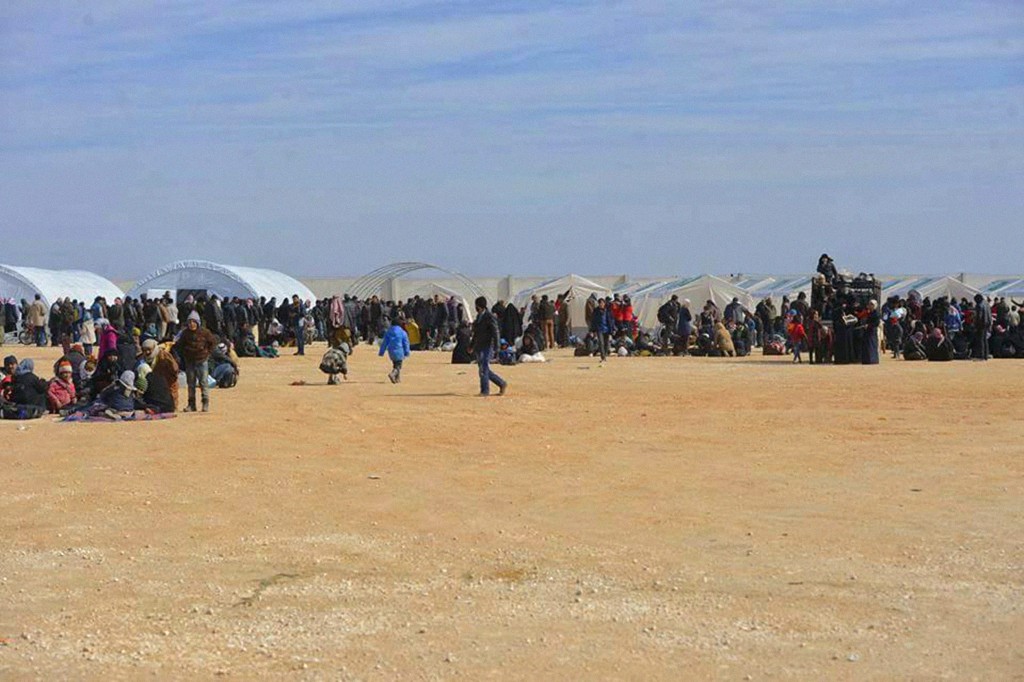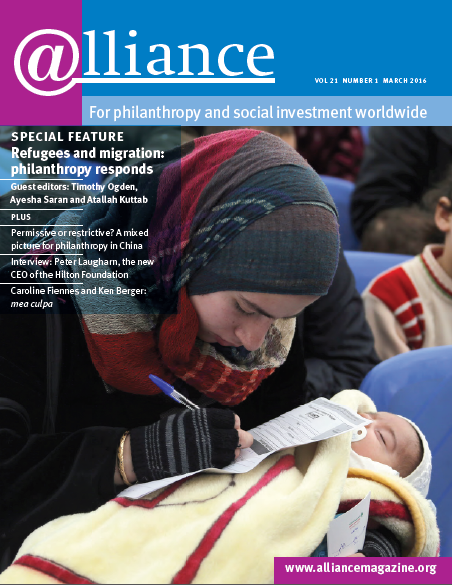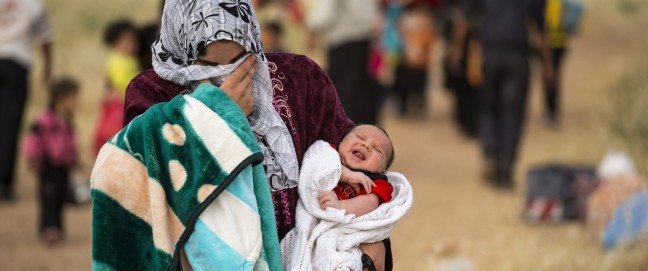With an intensifying armed conflict in Syria, a growing number of civilians have been internally displaced or have fled to neighbouring countries. If no political solution is reached, these numbers will continue to rise. But it’s not only those fleeing the conflict who are in need of humanitarian aid. Often, people in the countries who receive them need assistance, too.
The situation within Syria …
The humanitarian situation in Syria is deteriorating. The destruction of infrastructure, homes and livelihoods has resulted in 13.5 million of Syria’s 22 million population being in need of humanitarian assistance. Moreover, the shifting conflict lines and high levels of insecurity and violence have restricted access to basic humanitarian services in many parts of the country. The UN High Commissioner for Refugees (UNHCR) continues to be the lead agency in providing essential humanitarian assistance and life-saving health assistance for extremely vulnerable individuals and families, and it remains the main source of information on the status of the 6.5 million internally displaced people (IDPs) within Syria. Local Syrian groups are able to collect data only within their areas of intervention, which makes it difficult to draw a comprehensive picture of the IDP situation.
‘The shifting conflict lines and high levels of insecurity and violence have restricted access to basic humanitarian services in many parts of the country.’
Nevertheless, and despite a volatile working environment, philanthropic organizations such as the Arab Human Rights Fund (AHRF) are still supporting timely human rights interventions inside Syria, as are many international organizations (often with regional offices in Lebanon), including European foundations such as Friedrich Ebert Stiftung, Heinrich Böll Stiftung and Kvinna till Kvinna Foundation. These interventions include documenting, monitoring and reporting human rights violations committed by different parties in the conflict, and those committed by Sharia courts; working with local committees on adopting human rights standards into their agenda; and providing human rights activists with capacity building to enable them to do their work better.

Displacement from Aleppo Countryside to Turkey. Credit Deepening Awareness and Restoring Bridging (DARB), AHRF grantee partner.
… and in neighbouring countries
There are five main countries in the region receiving Syrian refugees – Egypt, Iraq, Jordan, Lebanon and Turkey. Together they host around 4.3 million refugees from Syria. While all asylum seekers from Syria should be presumed to be in need of international protection, Lebanon and Turkey have recently closed their borders to the majority of refugees from Syria. This has contributed to an increase in people trying to flee Syria into Jordan, which hosts over 633,000 refugees from Syria. Twelve thousand Syrian refugees have been stranded on the Jordan side of the Jordan-Syria border since November 2015, including children, pregnant women and elderly people.
‘The incidence of poverty in Lebanon has risen by 6 per cent since 2011, while the number of vulnerable Lebanese families is increasing exponentially.’
Lebanon and Turkey are the two countries that have received the highest number of Syrian refugees. Turkey hosts over 2,180,000 registered Syrian refugees, spread across urban areas and 22 camps. With over 1 million registered refugees, excluding over 117,000 Palestinians, Lebanon has one of the highest per capita ratios in the world of people registered as refugees.
Impact of the Syrian crisis in Lebanon
The impact of the Syrian crisis – including on the economy, demographics, political stability and security – continues to deepen across Lebanon, whose capacity to withstand it will be severely tested if effective international support is not forthcoming soon. In its Crisis Response Plan for 2015-16, the Lebanese government identifies three priorities:
- Ensure humanitarian assistance and protection for the most vulnerable among the displaced from Syria and the poorest Lebanese
- Strengthen the capacity of national and local delivery systems to expand access to and quality of basic public services
- Reinforce Lebanon’s economic, social, institutional and environmental stability
Syrian refugees in Lebanon have access to most basic services through public institutions, with support from civil society actors, who are also actively working to protect their basic rights and to make them aware of their rights under Lebanese law. AHRF and many international organizations are currently supporting these civil society actors.

Syrian boys, whose family fled their home in Idlib, walk to their tent, at a camp for displaced Syrians, in the village of Atmeh, Syria. Credit FreedomHouse.
AHRF’s grantee partners include NUON Organization for Peace-Building, which works on monitoring, documenting and reporting on human rights violations against Syrian refugees in Lebanon’s Bekaa valley. NUON also provides legal consultations for refugees and raises legal awareness about their rights under Lebanese law. AHRF also supports the Arab Resource Center for Popular Arts (ARCPA), which works with young Syrian refugees and youth from Palestinian camps and from marginalized Lebanese communities to produce short documentary movies exposing human rights violations in their communities.
But with the conflict continuing and needs growing all the time, much more support is needed. Life-saving humanitarian interventions are naturally at the core of aid agencies’ strategies, but the protection of human rights is also vital. The international community, including philanthropic actors, could play a valuable role in supporting civil society actors working to protect the rights of all those affected by the conflict and to ensure they are getting much-needed services.
However, all stakeholders should look to longer-term priorities as well as immediate needs, with a view to facilitating Syrian refugees’ return to their country while providing the support that will enable them to rebuild a more democratic and sustainable future.
For more information
Figures in this article are taken from the 3RP Regional Refugee & Resilience Plan 2016-2017 at http://www.3rpsyriacrisis.org
See also http://data.unhcr.org/syrianrefugees/regional.php
Samar Haidar is director of the Arab Human Rights Fund. Email samar@ahrfund.org







Comments (0)